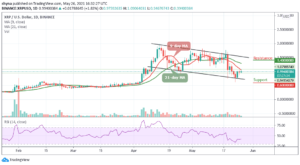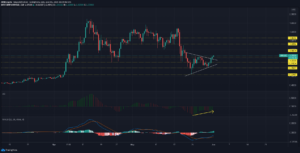
The last 15 months have demonstrated to the world the importance of having a well-run global supply chain to succeed in today’s volatile and complex operating environment. The semiconductor shortage, Suez Canal blockage, COVID-19 hot spots and variants, and the Biden Administration’s efforts to alleviate supply chain bottlenecks are just a few of the recent events that highlight the importance of predicting and preventing disruptions.
Yet volatility, uncertainty, complexity and ambiguity — the vaunted VUCA — are always present and testing companies’ ability to navigate day-to-day operations. Just a few years ago, we were worried about Amazon.com, tariffs and Brexit. With the pace of change unrelenting, the need for organizations to react quickly is increasing.
For decades, agility as it related to the supply chain meant managing with a just-in-time mentality, aimed at minimizing assets and inventory to drive earnings performance. But the idea of an agile supply chain is a double-edged sword that can leave companies scrambling. Afterall, “agile” is remarkably close to “fragile.” As we’ve seen over the last year and a half, agility can’t just be aimed at cost. Today, supply chain value relates directly to availability and responsiveness. Toyota skirted much of the impact of the semiconductor shortage by adhering to a business continuity plan derived after a hard lesson from 2011, when its supply chain was impacted in the aftermath of the Fukushima nuclear accident.
In any environment, operations can be a real competitive advantage. Agility, resiliency and adaptability are critical across the board. Following are four considerations for the C-suite as supply chain becomes a core operating system that can drive impact to the bottom line.
Integrated Business Planning
Because supply chain historically was seen as a cost center, it wasn’t necessarily managed to be accretive to the top line. The pandemic has flipped that attitude on its head. Now more than ever, there’s broad realization that supply chain touches anywhere from 60% to 80% of the business. In a goods-oriented economy, supply chain is required to physically deliver 100% of revenue for those companies and logistics is a supply chain function within the order-to-cash process.
In one example of the importance of resilience, Bain references a global electronics manufacturer that suffered a 66% drop in net income after the 2016 Kumamoto earthquake. It took the company a year to recover from the impact to its supply chain. Now, savvy business leaders are hyper-focused on the cross-connected implications of their business operations, identifying the tactical operating decisions that relate to how they’re driving business forward several quarters out, so that they can accommodate unexpected bumps both large and small.
A Critical Role
One big message sinking in for C-level leaders is how important a head of supply chain is to an organization. Supply chain business leaders must have a dynamic, cross-functional skillset — they’re leaders with background and experience in driving change and understanding the business of supply chain, not just individual functions. They must be very comfortable with I.T. and systems, focused on delivering measurable and action-oriented results, and able to think and act on the fly to make decisions in fluid conditions.
As the workforce becomes more diverse, consultants such as Deloitte point to the importance of expanding the talent base to include more women as a way to both bridge a growing skills shortage and maintain competitive advantage.
Agility, Resilience, Adaptability
The head of supply chain for Unilever has said that agility trumps forecasting any day. He’s so right. Agility is job one. You can’t accurately predict things 100% of the time, so it’s crucial to be able to react nimbly when the unforeseen occurs — making adjustments when a customer order falls through, for instance. Once you’ve mastered agility, developing resiliency will enable you to stay “in bounds” of how your organization operates today. Resilience is like asking yourself how long you can hold your breath while being out of bounds.
Adaptability means asking yourself how you can actually change the bounds you’re playing in — either by expanding the playing field or increasing the margins of performance. Because if you start holding your breath more and more, you get better at it. It might even be time to think about changing your whole organization, so that you don’t need to hold your breath as much. That’s true adaptability.
Room to Reinvent
During the pandemic, consumers became accustomed to shortages of retail goods like toilet paper and hand sanitizer, and are now getting used to having to delay gratification on certain items — like specific trim on a new automobile — or absorb higher costs if they want to get a product or service in hand sooner. This period will give companies a bit of breathing room to hone in on their supply chain management strategies, bullet-proofing them for the future by consolidating fragmented tools and seeking out cloud-based technologies that can provide more real-time insights.
It’s worth noting that a report from Bain recently called it “a painful lesson” that companies with the leanest, most efficient global supply chains suffered most from COVID-19 and other disruptions.
As with so many other things — from remote work to the massive migration to digital shopping, delivery and more — the pandemic accelerated and compressed a 10- to 20-year shift in thinking about supply chain management into a one-year cycle. Remember VUCA? Let’s add a “D” for “Disruption.” Your supply chain strategy must not only be able to withstand it, but it should also become your competitive advantage.
Evan Quasney is global vice president of supply chain with Anaplan.
- 2016
- ADvantage
- Amazon
- Ambiguity
- Assets
- availability
- bbc
- biden
- Bit
- board
- breathing
- Brexit
- BRIDGE
- business
- business continuity
- business operations
- change
- Companies
- company
- Consumers
- Costs
- COVID-19
- day
- delay
- delivering
- delivery
- deloitte
- digital
- driving
- Drop
- Earnings
- economy
- Electronics
- Environment
- events
- expanding
- experience
- Forward
- function
- future
- Global
- goods
- Growing
- head
- Highlight
- hold
- How
- HTTPS
- idea
- Impact
- Income
- insights
- inventory
- IT
- Job
- large
- Line
- logistics
- Long
- Making
- management
- months
- net
- operating
- operating system
- Operations
- order
- Other
- pandemic
- Paper
- performance
- present
- president
- preventing
- Product
- React
- real-time
- Recover
- remote work
- report
- Results
- retail
- Reuters
- revenue
- savvy
- semiconductor
- shift
- Shopping
- shortages
- skills
- small
- So
- start
- stay
- Strategy
- supply
- supply chain
- supply chain management
- Supply chains
- system
- Systems
- tactical
- Talent
- Technologies
- Testing
- The Future
- Thinking
- time
- Toilet
- top
- unilever
- value
- Vice President
- Volatility
- within
- Women
- Work
- Workforce
- world
- worth
- year
- years



